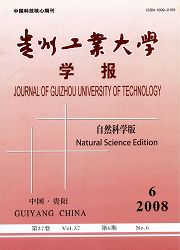

 中文摘要:
中文摘要:
前人在贵阳花溪大冶组中已描述解了13个遗迹属:Cochlichnus,Cosmorhaphe,Chomdrites,Gordia,Glockeria,Huaxichnus,Oldhamia,Phycosiphon,Protopaleodictyon,Pinnatpedus,Mammelichnus,Neonereites,Thalassinoides。新的遗迹化石材料发现于该地区的大治组第二和第三段中,包括Helminthopsis,Plarlolites,Rhizaocorallium,Megagrapton等4个遗迹属。根据该地区的遗迹化石组合特征和大冶组地层结构特征分析,富含遗迹化石的大冶组饥饿段灰岩为Nereites相沉积,贵阳花溪地区在早三叠世位于碳酸盐台地缓坡边缘前沿。
 英文摘要:
英文摘要:
13 ichnogenus have been described before: Cochlichnus, Cosrnorhaphe, Chondrites, Gordia, Glockeria, Huaxichnus, Oldhamia, Phycosiphon, rotopaleodictyon, Pinnatpedus, Mammelichnus, Neonereites,Thassinoides. New materials of trace fossils were found in the second and third section of Daye Formation, including four ichnogenus: Planolites, Rhizocorallium, Megagrapton, Helminthopsis. They are mainly considered as Seilacher' s Nereites ichnofacies. It is speculated that the middle Daye Formation was Nereites ichnofacies from the features of stratigraphy and trace fossils,and Huaxi may be in the front line of carbonate platform slope margin in Early Triassic.
 同期刊论文项目
同期刊论文项目
 同项目期刊论文
同项目期刊论文
 Excursion Guide: Permian-Triassic boundary and a Lower-Middle Triassic boundary sequence on the Grea
Excursion Guide: Permian-Triassic boundary and a Lower-Middle Triassic boundary sequence on the Grea Permian and Triassic depositional history of the Yangtze platform and Great Bank of Guizhou in the N
Permian and Triassic depositional history of the Yangtze platform and Great Bank of Guizhou in the N 期刊信息
期刊信息
